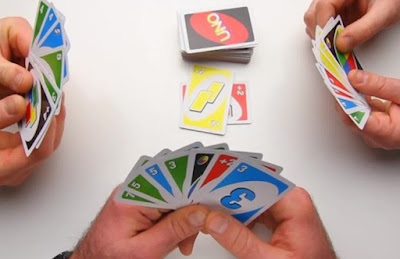Calculator usage is allowed.
and the rest are not swimming.

If the above question is easy, try to do the more challenging question below.
The question below will randomize with different numbers every hour.Calculator usage is allowed.

If the above question is easy, try to do the more challenging question below.
The question below will randomize with different numbers every hour.The following question type require students to understand what each numerator and denominator represents.
There will be
fraction of the "total"
fraction of "one type"
fraction of "left"
Such questions usually appear in P5 SA2 and P6 exam papers in paper 2.
Calculator usage is allowed.

If the above question is easy, try to do the more challenging question below.
The following question type require students to be able to understand "fraction of remaining".
2 fractions are given to represent 2 items
and 2 numbers are given to represent one of the items and the final amount left.
Such questions appear in P5 and P6 exams and will be in Paper 2.
Calculator usage is allowed.
Joe started reading a novel.
He read 2/5 of the novel on Monday.
He read another 58 pages of the novel on Tuesday.
After reading 1/4 of the remaining novel on Wednesday,
he finished reading the last 96 pages of the novel on Thursday.
How many pages were there in this novel?

If the above question is easy, try to do the more challenging question below.
The following question type is an advance version of "Sum of 2 given".
Instead of giving a sum of 2 (out of 3 items) , the sentences are rephrased in another manner.
Such questions usually appears in Paper 1.
Calculator usage is not allowed.
The students of class 5A, each joined one of these 3 different clubs,
namely, a computer club, a nature club and an astronomy club.
15 students are not members of the computer club.
17 students are not members of the nature club.
12 students are not members of the astronomy club.
How many students are there in class 5A?

The question type below is common for P5 and P6 and often appears as the last question of Paper 1.
Calculator usage is not allowed.
 |
| Carpenter's ruler |


This question is a variation of a tough P5/P6 Paper 2 high value question.
(A slightly more complex version of this question can be found here. )
2 different item of different quantities and individual values.
Only 4 information/numbers are given,
Namely
1) Total value of both items
2) Ratio between the quantity of both items
3) Individual value difference between both items
4) Total value difference between both items
Calculator usage is allowed.

Comparing 3 parties with 2 separate sentences is common in P3.
In the later part of P3 and onto P4,
students are required to know how to draw comparison models with a single sentence such as one below.
Mark has 15 more cards than Reuben and 11 less cards than Bernard.
Who has the most and who has the least cards?

To assist P3 and P4 Math students with comparison model drawing,
such visual aids may be useful.

Instead of having them draw the model,
have them fill in a partially drawn model first.
If the student is able to fill in all the missing boxes, the model should be able to instruct them on how to find the answer.
This question type deals with 2 parties with a total sum of money.
There is a comparison with multiples on the amount of money spent between the 2 parties.
The amount of money left is also compared using multiples.
Such questions are suitable for P5 and P6.
These questions will usually appear in paper 2 in P5 SA2 and P6 papers.
Calculator usage is allowed.
 | |
|
This question provides 2 different totals of 2 different items with different unit values and quantities. But it does not give any other information besides the quantities and the totals.
This question is a more advance version of this question.
(Where 2 different item types and 2 totals are given but no comparisons given between the 2 different items)
Such questions are suitable for P5 and P6.
These questions will usually appear in paper 2.
Calculator usage is allowed.
What is the cost of 8 boxes of gum?

 |
| Diagram above may not be drawn to scale |